Food
Insect Butter
The latest effort to convince everyone to eat insects comes from Ghent University in Belgium where researchers tested whether people could tell the difference between waffles, cookies, and cake made with butter, versus butter combined with fat from black soldier fly larvae.They claimed that a mixture of 75% butter and 25% insect fat was undetectable to people. And, in some cases, even a 50/50 mix of butter/insect fat couldn’t be detected.
So they’re hopeful that bakery products made with insect butter may soon be on shelves. They note:
More info: Ghent University
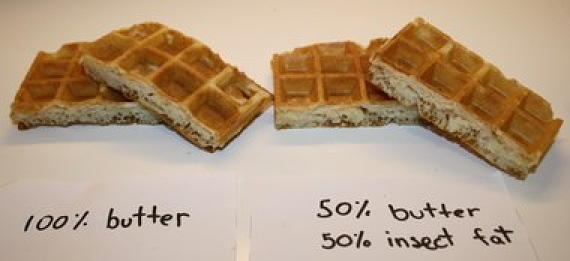
Posted By: Alex - Wed Feb 19, 2020 -
Comments (2)
Category: Food, Insects and Spiders
Follies of the Madmen #466
This was part of a campaign that made far-fetched comparisons between the animal kingdom and a desire to eat Jello.Source.
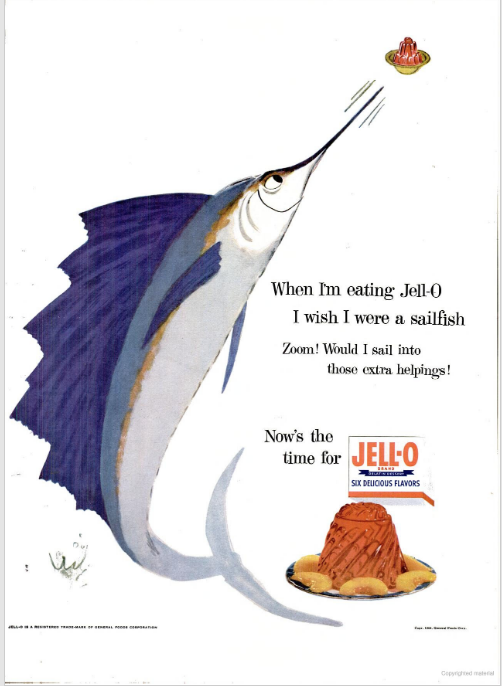
Posted By: Paul - Sat Feb 15, 2020 -
Comments (0)
Category: Animals, Business, Advertising, Food, 1950s
Serve More Cottage Cheese
A 16-page recipe book published in 1954 by the National Dairy Products Corporation, Sealtest Division.A better name for the cover recipe would be Vomiting Clam.


via reddit
Posted By: Alex - Thu Feb 13, 2020 -
Comments (0)
Category: Food, Cookbooks, 1950s
Peanut Butter Floor
An art installation consisting of peanut butter spread out on a floor in a giant rectangle. The Museum Bojimans Van Beuningen website provides some historical context:I guess the five-second rule would no longer apply.


via Book of Joe
Posted By: Alex - Tue Feb 11, 2020 -
Comments (7)
Category: Art, Food
Obst
Posted By: Paul - Sun Feb 02, 2020 -
Comments (1)
Category: Animals, Anthropomorphism, Food, Surrealism
Cow burgers and hot dogs
In 1950, Rodney Graves of Arizona patented cow-shaped burger patties. However, he missed an opportunity by not also patenting a cow-shaped bun.
Edward Kiwala of Chicago didn't make a similar mistake when, in 1969, he patented a dog-shaped hot dog (or, at least, a hot dog with four legs like a dog). He also patented the accompanying bun.

Posted By: Alex - Sat Jan 11, 2020 -
Comments (2)
Category: Food, Inventions, Patents
The Taste Organ
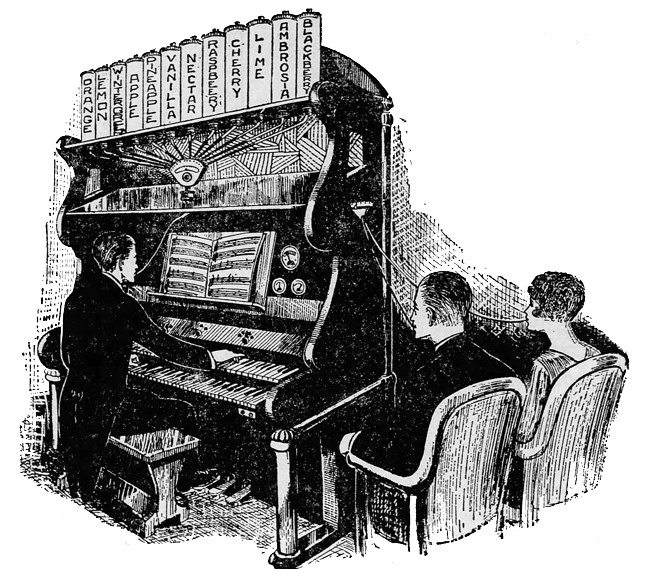
Decatur Herald - Sep 14, 1926
Posted By: Alex - Thu Jan 02, 2020 -
Comments (0)
Category: Food, Inventions, 1920s
Merry Christmas, 2019!
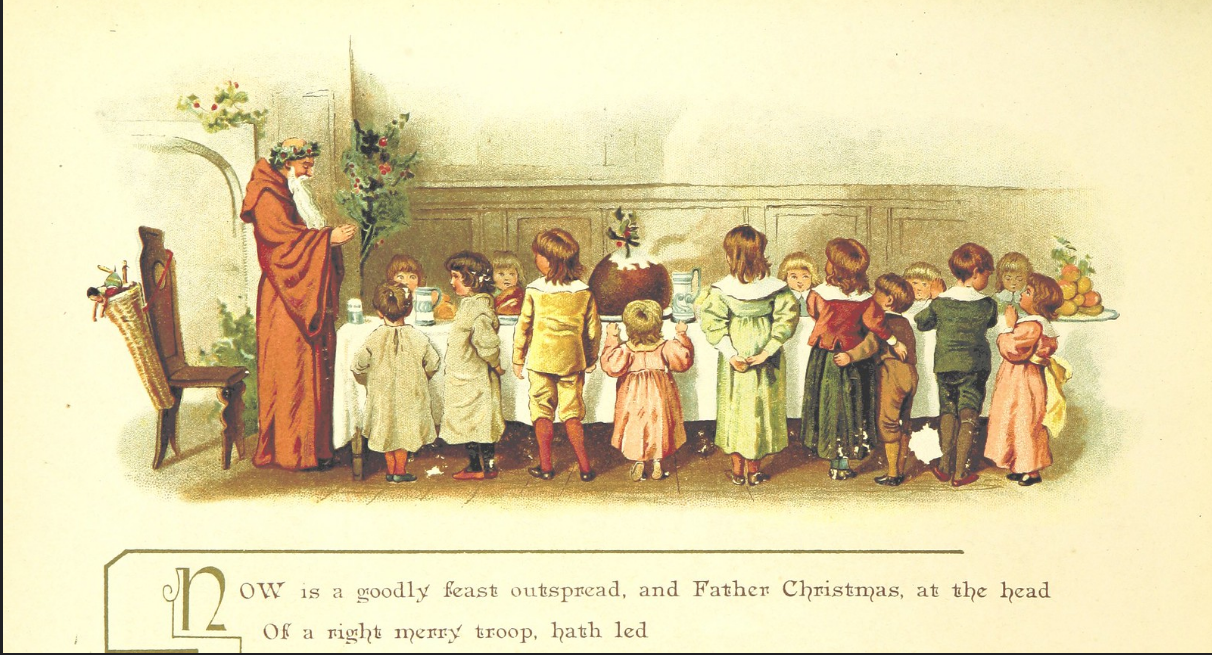
Posted By: Paul - Wed Dec 25, 2019 -
Comments (4)
Category: Food, Holidays, Children, Nineteenth Century, Nostalgia
Canned Dandelions
Reports from the late 1980s claimed that the Wells family in Maine were the only producers in America of canned dandelions. The family had been in this business since 1894 when Walter Scott Wells founded the dandelion cannery. In the 1960s, the family also began offering canned fiddleheads, selling both under the Belle of Maine label.However, the Strange Maine website indicates that since 2012 the Wells family has given up canning and is now only selling fresh, in-season fiddleheads and dandelions. Which would mean that it's apparently impossible to buy canned dandelions... at least, in the US. Not sure if a dandelion cannery still exists somewhere else in the world.
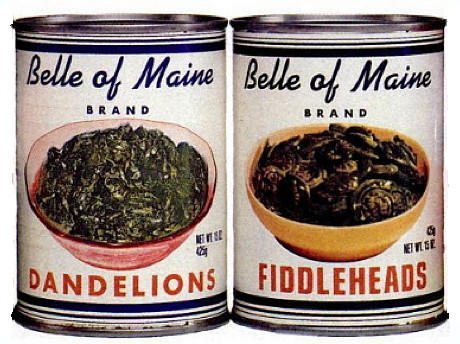
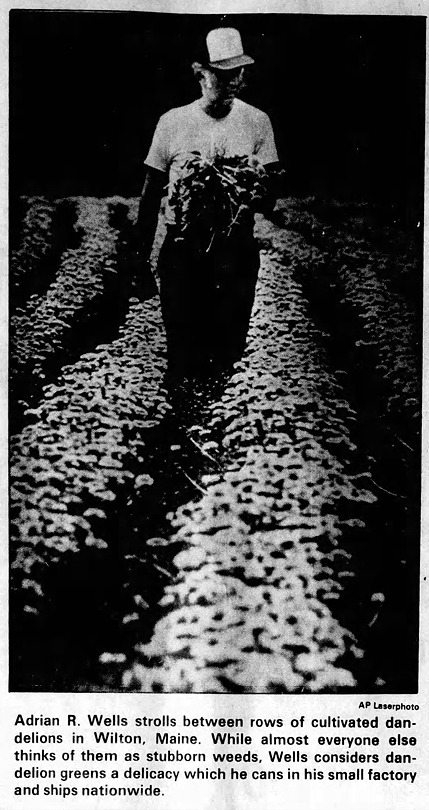
Hartford Sentinel - May 27, 1988
Posted By: Alex - Fri Dec 20, 2019 -
Comments (4)
Category: Food
White Grub Broth
The holiday season is upon us. So, what better time to experiment with white grub broth in your cooking. Switch out the usual chicken stock for some white grub broth, and see what your guests think. Or just serve it on its own!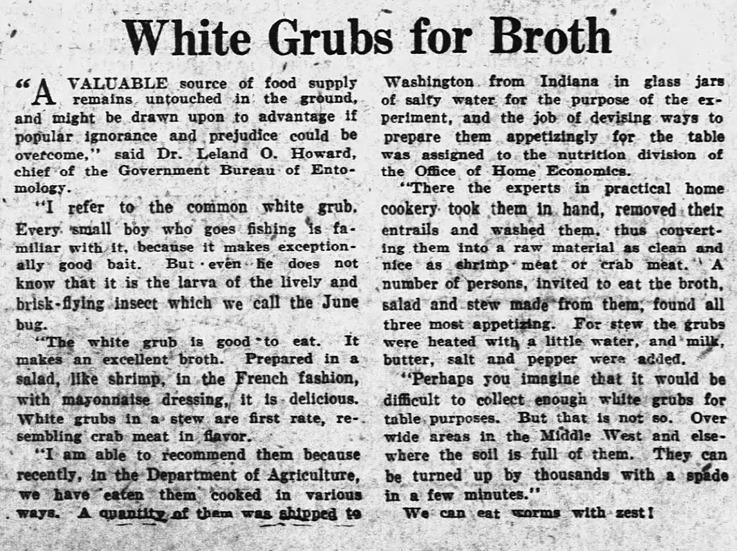
Sioux City Journal - Aug 6, 1922
"I refer to the common white grub. Every small boy who goes fishing is familiar with it, because it makes exceptionally good bait. But even he does not know that it is the larva of the lively and brisk-flying insect which we call the June bug.
"The white grub is good to eat. It makes an excellent broth. Prepared in a salad, like shrimp, in the French fashion, with mayonnaise dressing, it is delicious. White grubs in a stew are first rate, resembling crab meat in flavor.
"I am able to recommend them because recently, in the Department of Agriculture, we have eaten them cooked in various ways. A quantity of them was shipped to Washington from Indiana in glass jars of salty water for the purpose of the experiment, and the job of devising ways to prepare them appetizingly for the table was assigned to the nutrition division of the Office of Home Economics.
"There the experts in practical home cookery took them in hand, removed their entrails and washed them, thus converting them into a raw material as clean and nice as shrimp meat or crab meat. A number of persons, invited to eat the broth, salad and stew made from them, found all three most appetizing. For stew the grubs were heated with a little water, and milk, butter, salt and pepper were added.
"Perhaps you imagine that it would be difficult to collect enough white grubs for table purposes. But that is not so. Over wide areas in the Middle West and elsewhere the soil is full of them. They can be turned up by thousands with a spade in a few minutes."
We can eat worms with zest!
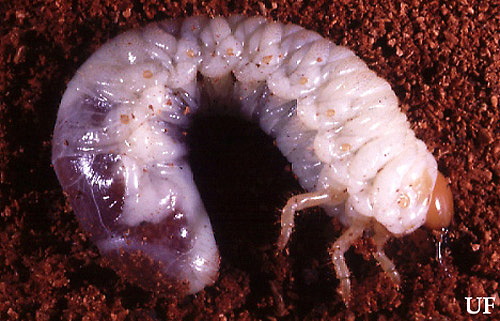
Typical white grub (source: University of Florida entomology & nematology)
Posted By: Alex - Fri Dec 13, 2019 -
Comments (2)
Category: Food, Insects and Spiders

| Who We Are |
|---|
| Alex Boese Alex is the creator and curator of the Museum of Hoaxes. He's also the author of various weird, non-fiction, science-themed books such as Elephants on Acid and Psychedelic Apes. Paul Di Filippo Paul has been paid to put weird ideas into fictional form for over thirty years, in his career as a noted science fiction writer. He has recently begun blogging on many curious topics with three fellow writers at The Inferior 4+1. Contact Us |




